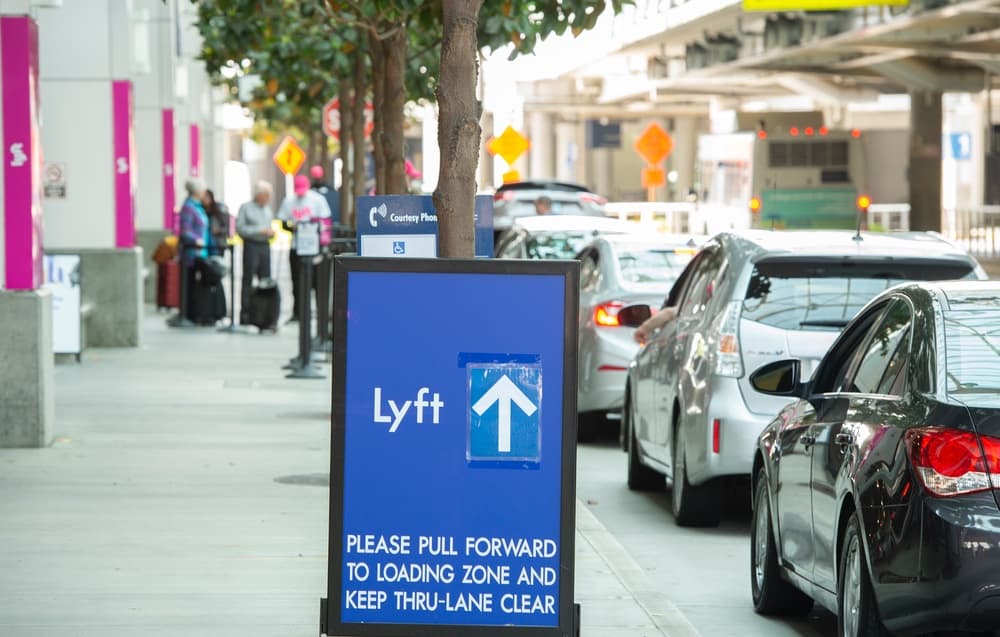Hailing an Uber (NYSE: UBER) or Lyft (NASDAQ: LYFT) at the Portland International Airport can be a huge headache, with ride-hailing services making 400 pickups an hour during peak travel times. Travelers have to navigate a crowded and chaotic scene and can wait up to 30 minutes for a driver, complicating ride-sharing’s instant gratification business model.
As part of broader congestion management plan, the Portland airport worked with Uber and Lyft to come up with a solution using a pin code system. The new solution, which debuted exclusively in Portland two weeks ago, combines features of taxis – queuing up at the curb – with the pre-arranged app-based technology pioneered by the ride-sharing giants.
“It’s been very frustrating for travelers trying to link up with the right drivers,” said Kama Simonds, a spokesperson for the Port of Portland, the agency that manages the airport. “Our goal is to speed up the connecting time between travelers and their rides.”
The model works like this – travelers use an app to request a pin number – as Simonds notes, they can request the number as soon as their plane has landed, “while sitting in row 22.”
Once they exit the airport, they go to a designated pickup island in the arrivals area, where the Port of Portland recently assigned specific locations for each ridesharing company.
Here’s the kicker – instead of tracking down your specific driver, you stand in a line and take the first available car. Share the six-digit code with the driver, and you’re off.
“The word seamless is a key word here,” said Sarah Biggart, operations lead for Uber’s Pin project in Seattle. “We think can deliver truly a zero waste experience for riders.”

Lyft line, Portland International Airport (Image: Port of Portland)
Uber has used the technology to manage congestion at 50 or so big events around the world. But the Portland airport is the first in the world where the pin feature has been deployed, said Biggert, who is part of Uber’s airport team in Seattle.
That group “is constantly innovating and thinking about airport experience,” she said. “This is one part of that story.”
Lyft conducted a pin code pilot in San Diego before launching the system in Portland.
“Lyft is committed to improving people’s lives with the best possible transportation. We are grateful for the partnership with Portland International Airport and their approach to innovation that allowed us to make this happen,” said Bakari Brock, senior director of city partnerships at Lyft, in an email.
Two weeks into the pilot, the airport is already seeing an improvement in traffic, Simonds said. “We’re definitely not able to do away with all the lines,” she said. “But without question it has absolutely helped.”
The system, she observed, “acts like a taxi in many ways.”
Uber and Lyft declined to share data connected to the pin code feature.
Biggart rejected any comparison with taxis. “We think it’s quite different from how a taxi queue would work,” she said. “The Uber magic is push a button and get a ride. Because it is digital and pre-arranged, it is quite different.”
Uber has yet to solidify plans to bring the new curbside service to other airports, Biggart said. Lyft plans to rollout the new curbside service to other airports but declined to reveal further details.










